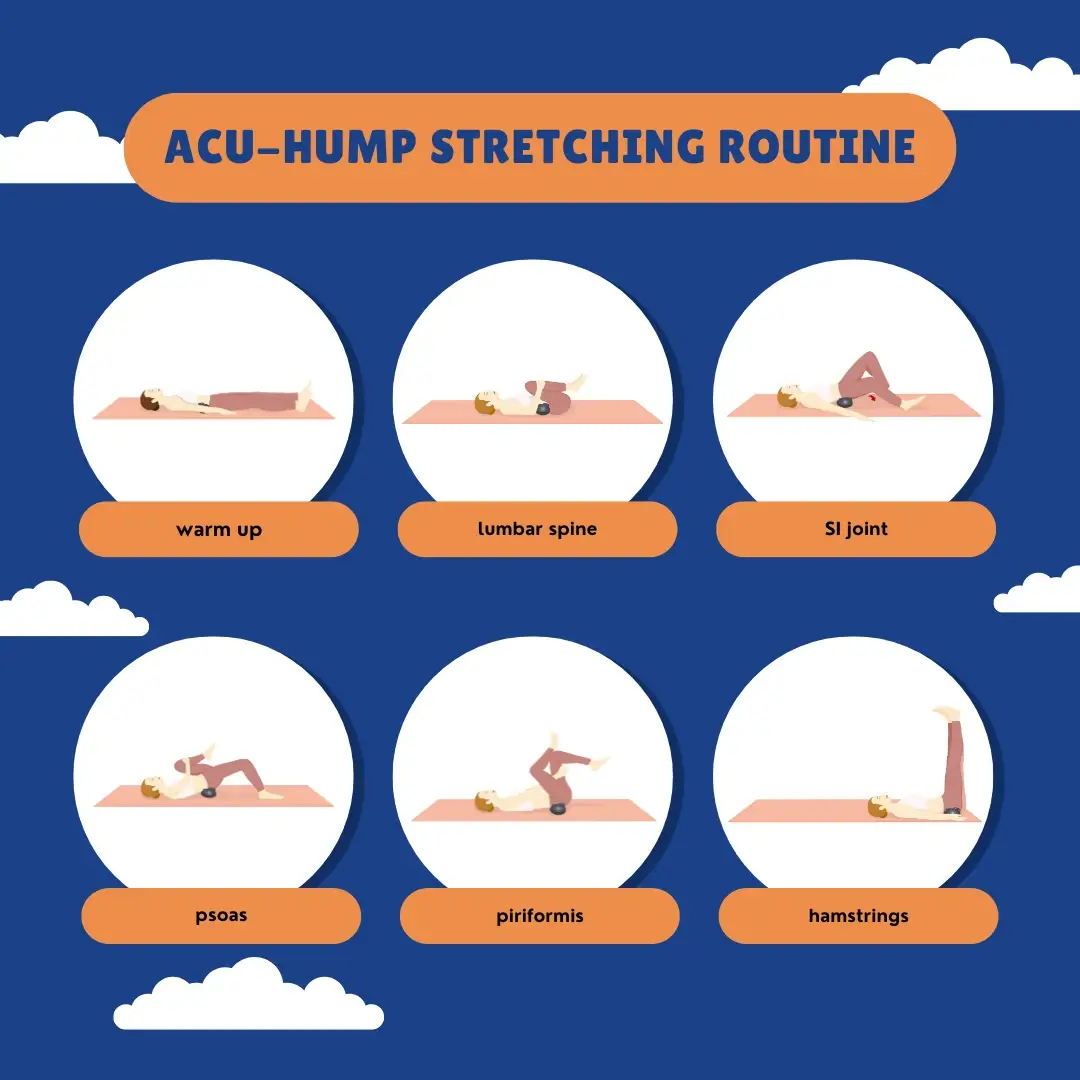What is Piriformis Syndrome
Piriformis syndrome is a condition that affects the piriformis muscle, which is located in the buttock area. This muscle is responsible for stabilizing the hip joint and helping with leg movement. When the piriformis muscle becomes tight, irritated, or damaged, it can cause pain and discomfort in the buttock, as well as down the leg. Early diagnosis and treatment of this condition can prevent further complications.
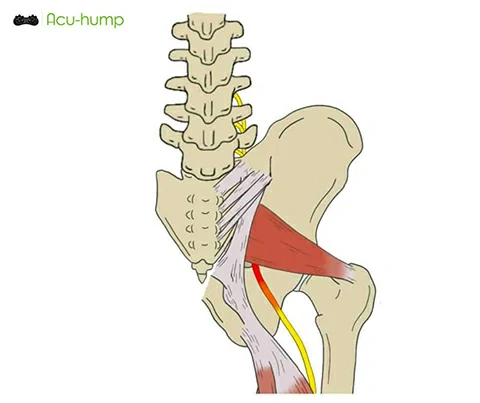
Symptoms of Piriformis Syndrome
The pain experienced with piriformis syndrome can be quite severe and may feel like a sharp, stabbing sensation. The pain is often located in the buttock area, particularly towards the back and side of the hip, and may spread down the back of the thigh and into the calf, ankle or foot. Numbness or tingling in the leg may also be present, along with a feeling of weakness or fatigue in the leg.
Difficulty sitting for long periods of time is a common complaint, as the pressure on the affected area can exacerbate the pain and discomfort. The pain may also worsen with certain activities, such as hill running, walking or climbing stairs, as well as after prolonged periods of sitting or other forms of inactivity. These symptoms can have a significant impact on a person’s quality of life, making everyday tasks and activities difficult or impossible to perform.
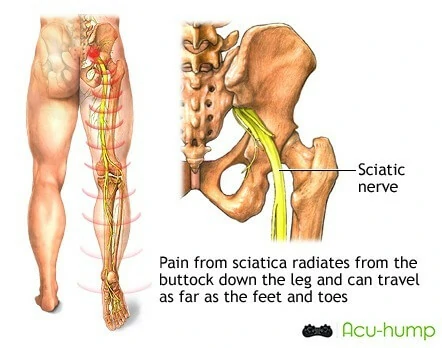
Piriformis Syndrome Symptoms vs Sciatica Symptoms
These 2 conditions share similar symptoms, however, sciatica is characterized by a compression of the sciatic nerve, which runs from the lower back, through the buttocks, and down into the leg.
It is usually a secondary condition, caused by a herniated disk, spinal stenosis, or other spinal conditions, or as a result of piriformis syndrome.
Sciatica is generally classified as either originating in the buttocks or lower back, called piriformis syndrome or sciatica respectively. Piriformis syndrome is caused by the compression of the sciatic nerve by the buttock muscles, while other causes of sciatica involve compression of the nerve in the lower back.
Unlike sciatica originating from the spine, piriformis syndrome usually starts in the buttocks and, in severe cases, may radiate down to the lower back.
Sciatica commonly affects both sides of the body with varying degrees of intensity. The symptoms of piriformis syndrome are usually limited to one side of the buttock area.
It is important to differentiate between piriformis syndrome and sciatica1, as the treatment options vary depending on the cause of pain. A healthcare provider can perform physical examinations, imaging tests, and nerve conduction studies to diagnose the underlying condition and develop a treatment plan.
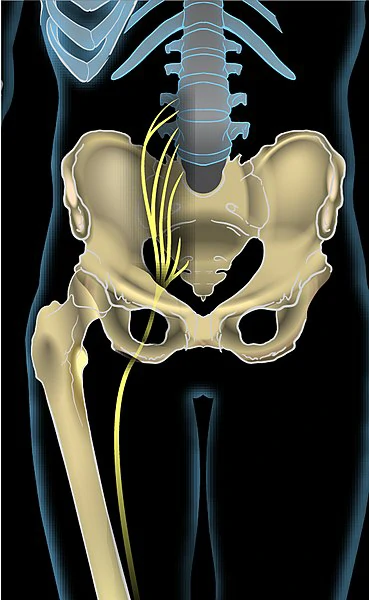
Causes of Piriformis Syndrome
There are several common causes of piriformis syndrome. One of the primary causes is the tightening of the piriformis muscle, which can result from overuse or lack of stretching. Additionally, the piriformis muscle may become irritated or damaged, leading to the development of this condition.
Trauma or injury to the lower back or hip area may also be a contributing factor in developing piriformis syndrome. Repetitive motions that strain the piriformis muscle can also lead to the development of this condition, particularly in those who engage in activities that require a lot of running or jumping.
Finally, prolonged sitting is another common cause of piriformis syndrome, as sitting for long periods of time can cause the muscle to become stiff and tight. It is important to note that there may be other, less common causes of piriformis syndrome as well, and individuals who are experiencing symptoms of this condition should seek medical advice to determine an accurate diagnosis and appropriate treatment plan.

Diagnosis
Diagnosis of Piriformis Syndrome involves a physical examination, where the doctor may check for tenderness in the buttock area. Imaging tests such as an MRI or X-ray may also be used to rule out other conditions, and electromyography (EMG) may be performed to check the muscle activity.
Treatment Options
In addition to rest and immobilization, physical therapy is often recommended as an effective treatment for piriformis syndrome.
Physical therapy may involve a combination of exercises to stretch and strengthen muscles in the affected area.
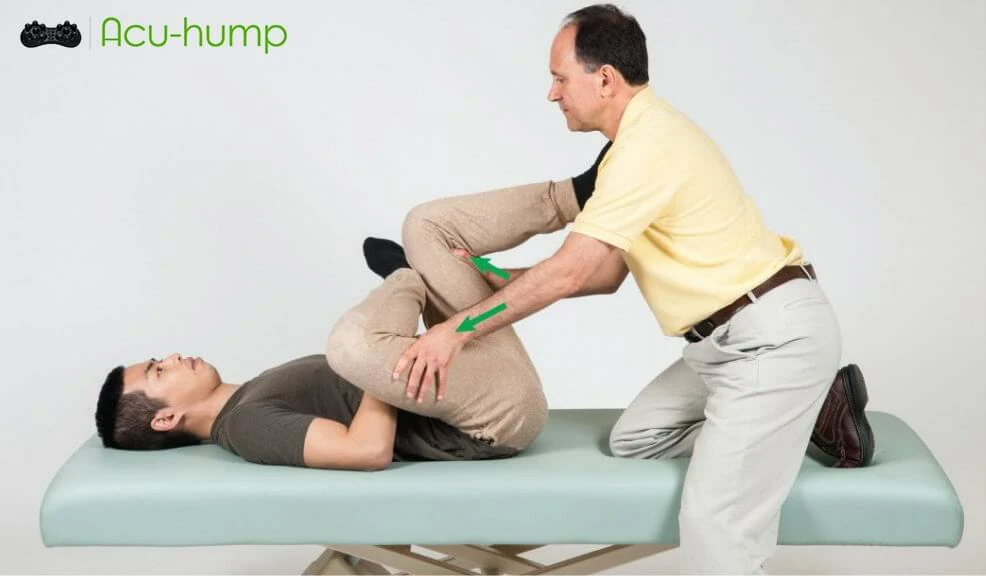
Acu-hump Release Lower Back to Hips
Acu-hump is an incredibly effective tool for massaging and stretching the piriformis muscle. This muscle is located deep in the buttock area and can become tight and inflamed, leading to pain and discomfort. By incorporating Acu-hump into your daily routine, you can help to release tension in the piriformis muscle and promote overall relaxation in the lower body.

Acu-hump: 30-day return policy. No risk for you.
Using Acu-hump to massage the piriformis muscle is simple and effective. Simply place the tool under the affected area and use it to apply pressure to the muscle. You can adjust the pressure to your liking and focus on areas that feel particularly tight or painful. The raised bumps on the tool will work to target and release pressure in the muscle, promoting relaxation and pain relief.
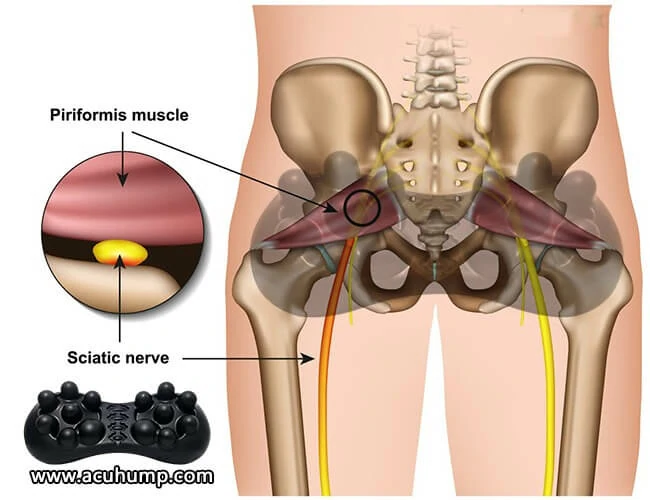
In addition to massage, stretching with Acu-hump can also be incredibly effective for releasing tension in the piriformis muscle. By using the tool to support and extend the muscle, you can work to increase flexibility and reduce the likelihood of injury. Regular stretching exercises can help to prevent the development of piriformis syndrome, while also promoting overall health and well-being.
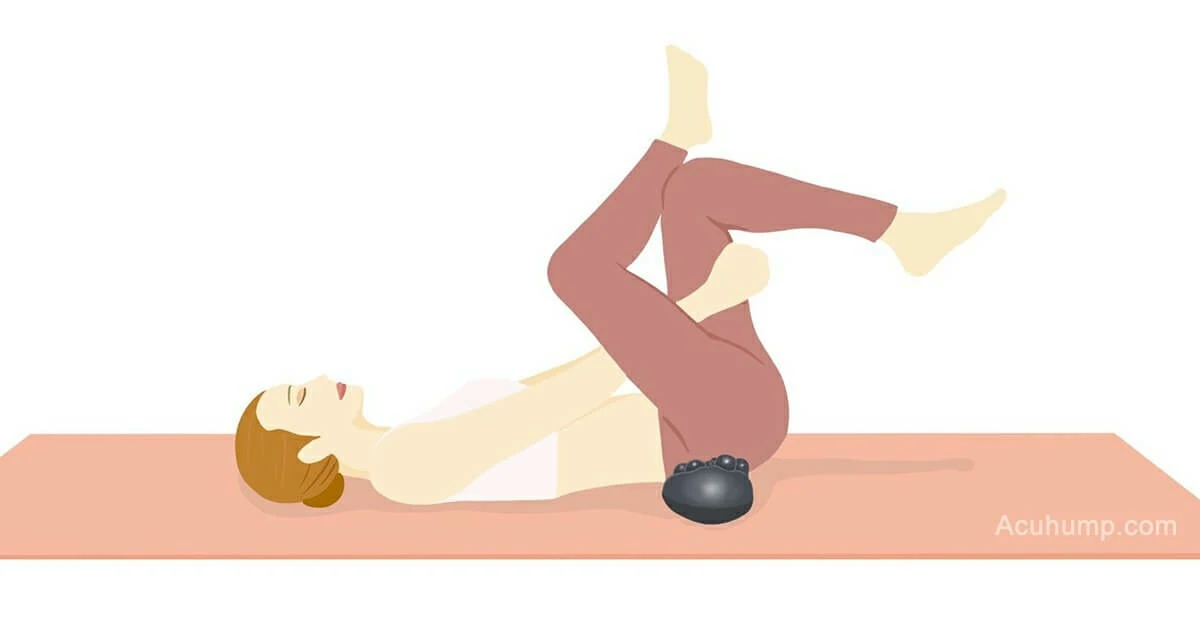
Incorporating Acu-hump into your daily routine is a simple and effective way to promote relaxation and ease tension in the lower body. Whether you are dealing with piriformis syndrome or simply looking for a way to release tension and improve flexibility, Acu-hump can be a valuable tool to have in your self-care arsenal.

Acu-hump®
Release Butt & Lower Back
Pain relievers and anti-inflammatory medication, such as ibuprofen or acetaminophen, may also be prescribed to help manage pain and reduce inflammation in the affected area.
In some cases, injections of medication, such as corticosteroids, may be recommended to further reduce inflammation and relieve pain.
In rare cases where other treatments have not been effective, surgery may be necessary to release the pressure on the sciatic nerve caused by the piriformis muscle. It is important to work closely with a healthcare provider to develop an individualized treatment plan that is tailored to a person’s specific needs, based on the severity of their symptoms and other factors.
Prevention
Preventing piriformis syndrome involves a number of measures that can help to reduce the likelihood of experiencing the condition. One of the most important steps is to engage in regular stretching and exercise. This can help to keep the muscles in the hip and buttock area flexible and strong, which in turn can reduce the risk of developing piriformis syndrome.
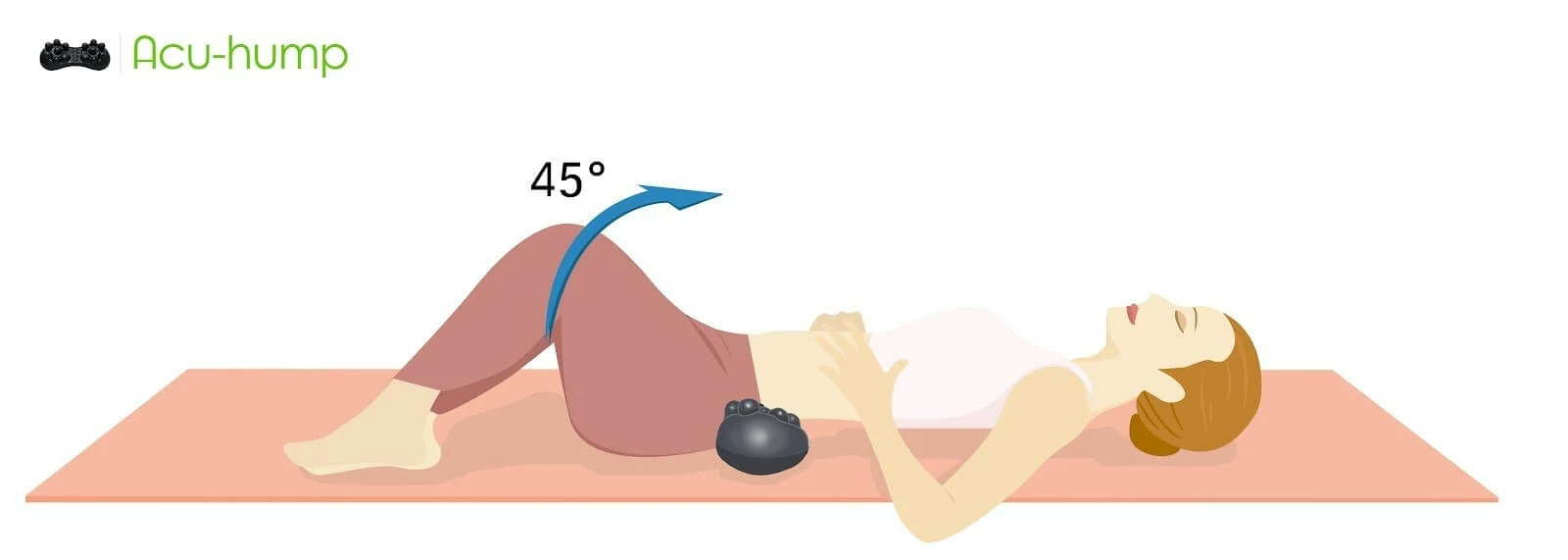
Acu-hump: 30-day return policy. No risk for you.
It is also important to maintain good posture while sitting and standing, as poor posture can put unnecessary strain on the muscles and increase the risk of developing this condition. Additionally, it is important to avoid prolonged sitting whenever possible. Taking frequent breaks to stand, stretch, and move around can help to reduce the risk of muscle tightness and strain in the hip and buttock area.
Finally, it is important to work closely with a healthcare provider to help determine if there are any underlying factors that may increase an individual’s risk of developing piriformis syndrome.
By taking proactive steps to keep the muscles in the hip and buttock area healthy, individuals can help to prevent this painful and often debilitating condition from occurring.

Piriformis syndrome is a condition that can cause significant pain and discomfort. Early diagnosis and treatment are crucial in preventing further complications. By maintaining good posture, regular stretching and exercise, and avoiding prolonged sitting, we can reduce the risk of developing Piriformis Syndrome and other related conditions.

Let’s Get Rid of Piriformis Pain
Save It to Your Phone and View It Anytime
Click to download: 10 Minute piriformis and lumbar pain exercises pdf
